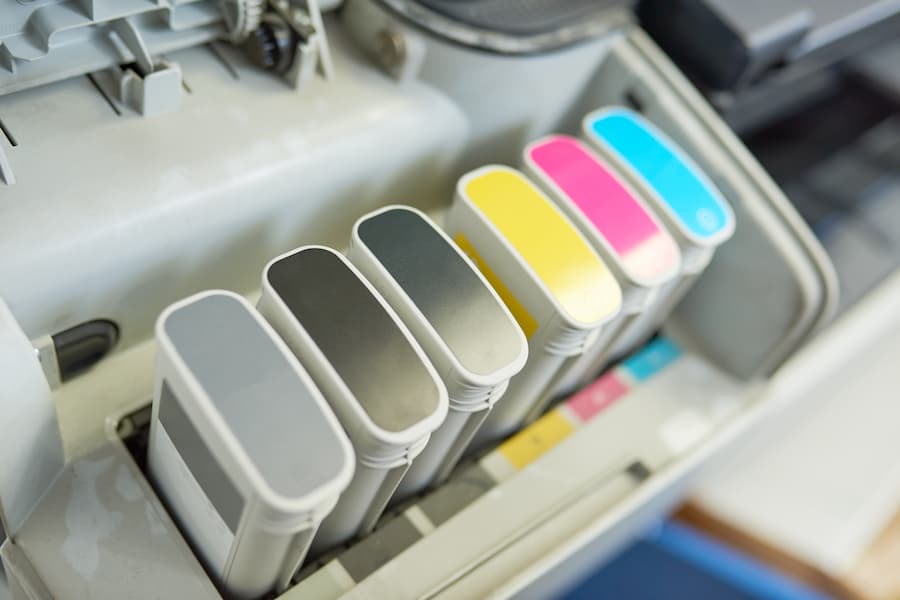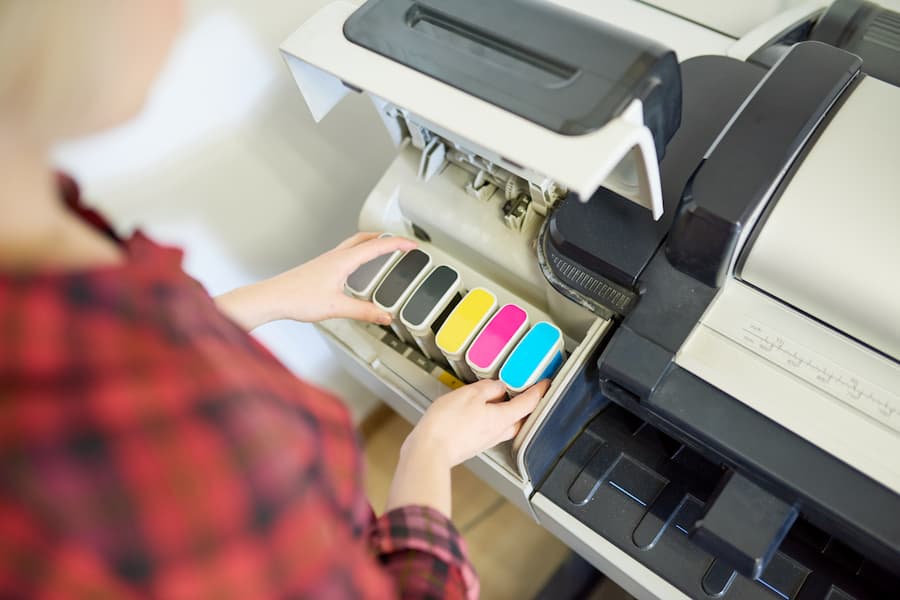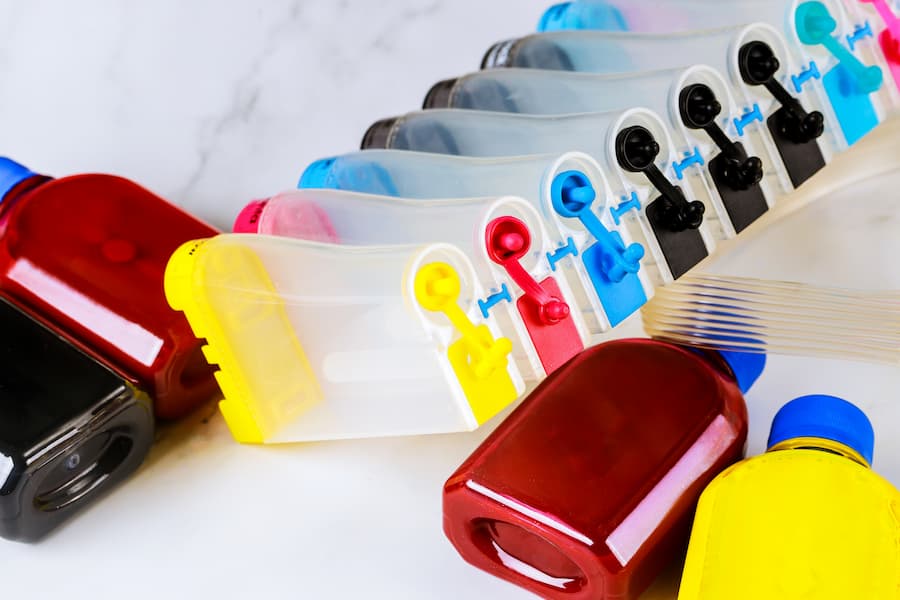Can Ink Expire? The Facts About Ink and Toner Cartridges
Ever wondered if the ink and toner cartridges in your printer have an expiration date? It’s a question that might not come to mind often, but understanding the life of your printer ink is crucial, both for home and professional use. In essence, just like other items, ink can expire. Knowing when and why can save you from unexpected printing mishaps and maintain the quality of your prints. Let’s delve into the facts about ink and toner expiration and how it impacts your printing tasks.
Can Ink Expire?
What Causes Ink to Expire?
Ink expiration is influenced by several factors, the main ones being temperature consistency, exposure to sunlight, and whether the cartridge is sealed or open. Ink cartridges thrive in stable room temperatures, far from the harshness of direct sunlight.
Once the seal is broken, the countdown begins. For optimal performance, it’s advised to use these cartridges within a specific timeframe, typically between one to two years.
Shelf Life of Ink Cartridges
The general shelf life of an ink cartridge oscillates between one and two years. However, once installed in a printer, the ink might dry out faster due to the ink seals being removed. Regular use, such as printing a page or two every week, can help keep the ink fluid and prevent clogging. For more insights on maintaining optimal print quality, consider visiting Epson’s Guide to Printer Maintenance and HP’s Tips on Ink Storage and Handling.
Facts About Ink Cartridges
Printer ink and toner cartridges typically include an expiration date on their packaging, a critical detail to ensure optimal print quality. Once this date passes, the efficacy of the ink or toner cannot be guaranteed by the manufacturer. Like all liquids, ink—be it from a bottle of ink for fountain pens or inkjet printer cartridges—can go bad, leading to a reduction in the usable ink inside the cartridge. This deterioration can result in ink drying up, potentially leading to clogged printheads in your printer, which might necessitate expensive repairs or cause significant downtime.
To mitigate these risks, it’s advised to avoid using expired ink cartridges. If you’re planning to stock printer ink cartridges—whether they’re for an inkjet printer, a laser printer, or even fountain pen ink—it’s wise to store them properly. Keeping them in their original, airtight packaging and in a dark place, away from direct sunlight, helps preserve their lifespan. Storage conditions should be stable, with controlled temperature and humidity to prevent the ink from going bad or the toner powder from clumping.
Storing cartridges correctly not only extends the shelf life of an ink cartridge but also ensures that the ink color and print quality remain consistent. It’s tempting to purchase cartridges in bulk to save money on printer ink, but remember that cartridges have a shelf life. Using ink efficiently and within its intended period maximizes the value of what is often one of the most expensive components of printing. Always consider the storage recommendations provided by printer manufacturers to ensure your ink lasts as long as it’s supposed to, keeping it safe to use and maintaining the high standards of your prints.
Facts About Toner Cartridges
Printers utilizing toner cartridges are often bulkier and more commonly found in office settings, thanks to their efficiency and durability for high-volume printing. Unlike ink-based printers, toner—a powdered substance—doesn’t risk drying out, making it a reliable choice for business or commercial use that demands crisp and clear image outputs. This key advantage of toner over liquid ink ensures consistent print quality over time, without the need for frequent replacements or maintenance due to drying issues.
While some toner manufacturers may specify an expiration date on their products, it’s not universally standard. To guarantee the best performance from your multifunction printer (MFP), it’s crucial to adhere to the manufacturer’s guidelines regarding the toner’s proper use and storage. Ideally, toner cartridges should be stored horizontally in environments where both temperature and humidity levels are controlled to protect from dust and other contaminants. This storage method helps maintain the toner’s quality and ensures it remains in top condition for use.
Despite the initial cost, toner cartridges are generally more economical than their ink counterparts in the long-term perspective, particularly for settings that require substantial printing tasks. Their longevity and efficiency in producing high-quality prints make them a cost-effective solution for frequent printing needs.
Consequences of Using Expired Ink
Impact on Print Quality
Using expired ink can significantly affect print quality. Colors may appear less vibrant, and prints could turn out streaky. This degradation in quality can be particularly problematic for projects requiring high accuracy in color reproduction. Therefore, ensuring your ink is within its shelf life is paramount for maintaining print integrity.
Potential for Damage
The results of using expired ink extend beyond just poor print quality. It can lead to clogs in the printhead and corrosion in the ink delivery systems. Such damage is not only inconvenient but can also be costly to repair, sometimes necessitating a complete printer replacement. To safeguard against these issues, it’s essential to monitor the expiration date of your cartridges and opt for replacements in a timely manner. For those looking to verify their ink authenticity, Canon’s Ink Authenticity Verification offers a reliable resource.
Understanding the expiration date of your ink and toner cartridges is crucial for ensuring the longevity and quality of your printer’s output. By keeping an eye on storage conditions, using ink within its shelf life, and replacing expired cartridges promptly, you can avoid the pitfalls of expired ink, including compromised print quality and potential printer damage. Above all, regular maintenance and informed cartridge management will keep your prints looking their best.
Identifying and Understanding Expiry Dates
Locating the Expiry Date
To locate the expiry date on your ink or toner cartridges, start by examining the packaging. Most manufacturers print the date on the side of the cartridge box. Sometimes, it’s on the cartridge itself. This date tells you how long the ink or toner will likely remain at its best quality. For inkjet printer and laser printer users alike, staying informed about this date ensures optimal print quality.
Expiration vs. Warranty Dates
It’s crucial to distinguish between expiration and warranty dates. The expiration date refers to when ink or toner might start to degrade, while the warranty date indicates the period during which the manufacturer guarantees the product’s performance. Typically, the expiration date falls after the warranty date, signifying that while the product may still function, it might not deliver the best results.
How long is ink supposed to last?
The longevity of printer ink, when preserved in its original, unopened packaging and stored under optimal conditions—cool and devoid of humidity—can stretch up to two years. This duration ensures that the ink retains its quality and consistency for use when needed.
To maximize the shelf life of your ink cartridges, it’s crucial to adhere to best storage practices. Such practices include avoiding extreme temperatures and direct sunlight, which can lead to the ink drying out or degrading prematurely. Proper storage not only extends the life of the ink cartridges but also contributes to consistent print quality over time, making it a cost-effective strategy for maintaining your printing supplies.
Best Practices for Ink Storage and Usage
Storage Tips
To extend the life of your ink cartridges, store them in a cool, dry place, away from direct sunlight. Toner cartridges benefit from being kept in a stable environment, avoiding extreme heat or cold. Positioning matters too; ink cartridges should be kept upright to prevent leaks and ensure even ink distribution.
Managing Ink Supply
Efficiently using your ink supply involves regular printing to keep the ink flowing and prevent clogging. Avoid overstocking on cartridges to minimize the chances of them expiring before use. For those considering stocking up, remember that cartridges have a shelf life and purchasing too many can lead to waste.
What People Also Ask
Can you use ink after its expiration date?
Using ink after its expiration date is generally discouraged. Over time, expired ink may degrade in quality, leading to subpar print outcomes. Moreover, there’s a risk of causing harm to your printer, as old ink can clog the print heads, necessitating costly repairs or replacements.
How to properly store ink cartridges?
To store ink cartridges correctly, place them in a sealed, shadowy spot, ideally maintaining room temperature. This approach prevents the ink from deteriorating due to exposure to light or extreme temperature variations, thereby extending the ink’s usability and preserving its quality for future use.
Conclusion
Understanding the expiration dates of printer ink and toner cartridges is essential for maintaining your printer’s performance and ensuring high-quality prints. Proper storage and usage practices can significantly extend the life of an ink cartridge, saving you from the frustration of expired ink.
Always be mindful of the shelf life and try to use ink within the recommended period. Taking simple precautions, such as storing cartridges correctly and not overbuying, can help you get the most out of your printer ink.
Above all, paying attention to expiration and warranty dates, alongside regular printer maintenance, can save you money and keep your prints looking their best for longer. Remember, while it might be tempting to use old ink, doing so could lead to unnecessary complications and expenses.














